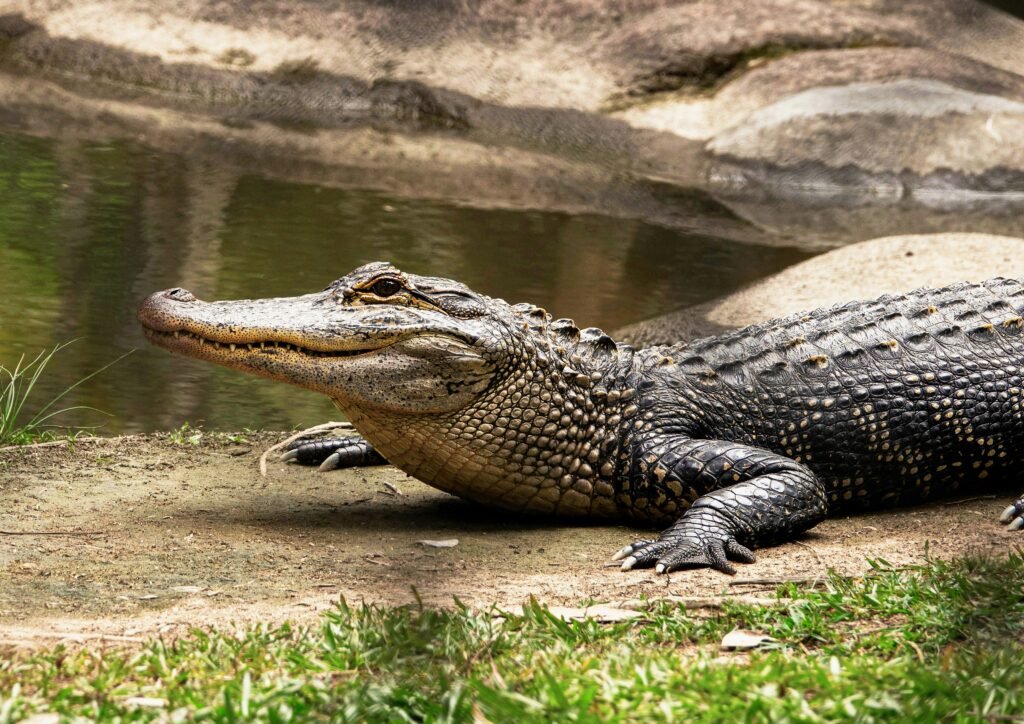Distinguishing Alligator and Crocodile Wallets: A Comprehensive Guide
Welcome to “Distinguishing Alligator and Crocodile Wallets: A Comprehensive Guide.” In this article, you will learn how to differentiate between alligator and crocodile wallets based on their unique characteristics. From the texture of the skin to the pattern of scales, we will provide you with the essential tips and information to help you make an informed decision when shopping for your next luxury accessory. Get ready to become an expert in distinguishing between these two exotic leather options! Have you ever found yourself wondering how to distinguish between alligator and crocodile leather when shopping for a new wallet? In the world of luxury accessories, it can be challenging to differentiate between the two exotic leathers. Don’t worry, in this comprehensive guide, we will walk you through everything you need to know to confidently identify the difference between alligator and crocodile wallets. Let’s dive in!

This image is property of images.unsplash.com.
Understanding Alligator and Crocodile Leather
When it comes to luxury wallets, alligator and crocodile leather are two of the most sought-after materials. Both types of leather are known for their durability, texture, and unique patterns. While they may look similar at first glance, there are some key differences between the two that can help you determine which one you are looking at.
Alligator Leather
Alligator leather comes from the belly skin of the alligator. It is known for its smooth and consistent scales that are evenly sized across the entire belly area. Alligator leather has a more symmetrical pattern with a larger, more pronounced scale in the center of each tile. The colors of alligator leather are typically more uniform, with fewer variations in shade.
When you see a wallet made of alligator leather, you can expect a luxurious and elegant appearance. Alligator leather is considered more prestigious and exclusive than crocodile leather, making it a popular choice among those who value high-end fashion and quality craftsmanship.
Crocodile Leather
Crocodile leather, on the other hand, comes from various parts of the crocodile’s body, including the back and sides. Crocodile leather has a more irregular scale pattern compared to alligator leather, with a mix of small and large scales across the surface. The scales on crocodile leather are not as symmetrical, creating a more unique and exotic look.
Crocodile leather is also known for its natural color variations, which give each piece a one-of-a-kind appearance. The texture of crocodile leather is slightly rougher than alligator leather, adding a rugged charm to the overall aesthetic. Despite its rougher texture, crocodile leather is still highly prized in the fashion industry for its exotic appeal.
Price and Availability
One of the most significant differences between alligator and crocodile wallets is their price and availability. Due to the rarity of alligator skins and the intricate process of sourcing and tanning them, alligator leather wallets are typically more expensive than crocodile leather wallets. Alligator leather is considered a luxury material, reserved for high-end designer brands and exclusive boutiques.
On the other hand, crocodile leather is more readily available and affordable compared to alligator leather. Crocodile skins are easier to source and produce, making crocodile leather wallets a popular choice for those looking for a more affordable luxury option. While still considered a premium material, crocodile leather offers a more accessible entry point into the world of exotic leather accessories.
Leather Quality and Durability
Both alligator and crocodile leather are known for their exceptional quality and durability. However, there are some subtle differences in the characteristics of each type of leather that may influence your decision when choosing a wallet.
Alligator Leather Quality
Alligator leather is renowned for its superior quality and longevity. The tight grain of alligator skin makes it highly resistant to wear and tear, ensuring that your wallet will maintain its pristine appearance for years to come. Alligator leather is also more flexible and supple than crocodile leather, making it an excellent choice for wallet construction.
Crocodile Leather Quality
Crocodile leather is also highly durable and long-lasting, but it may not be as resilient as alligator leather in certain conditions. The larger scales and rougher texture of crocodile skin can make it more prone to abrasion and scratches over time. However, with proper care and maintenance, a crocodile leather wallet can still provide many years of use and enjoyment.
Legal and Ethical Considerations
When purchasing an alligator or crocodile leather wallet, it is essential to consider the legal and ethical implications of your decision. Both alligator and crocodile species are protected under various conservation laws to prevent overexploitation and ensure their survival in the wild.
Alligator Leather Regulation
Alligator leather comes from the American alligator, which is subject to strict conservation regulations in the United States. The harvesting of alligator skins is tightly controlled to prevent depletion of wild populations and maintain the species’ ecological balance. When shopping for an alligator leather wallet, look for products that adhere to these regulations and support sustainable practices in the fashion industry.
Crocodile Leather Regulation
Crocodile leather comes from various crocodile species, including the Nile crocodile and the Australian saltwater crocodile. Similar to alligators, crocodiles are protected under international agreements and national laws to ensure their protection and welfare. It is essential to purchase crocodile leather products from reputable brands that source their materials ethically and uphold responsible production standards.

This image is property of images.unsplash.com.
Identifying Genuine Alligator and Crocodile Leather
With the rise of counterfeit products in the luxury goods market, it is crucial to know how to identify genuine alligator and crocodile leather when shopping for a wallet. Here are some tips to help you distinguish between authentic exotic leather and imitation materials.
Feel the Texture
One of the easiest ways to identify genuine alligator and crocodile leather is by feeling the texture of the skin. Alligator leather has a smooth and soft texture due to the tight grain of the skin, while crocodile leather feels slightly rougher and more textured. Run your fingers across the surface of the wallet to assess the quality and authenticity of the leather.
Examine the Scales
Another telltale sign of authentic alligator and crocodile leather is the scale pattern on the surface of the wallet. Alligator leather has symmetrical scales with a consistent size and shape, while crocodile leather has a more irregular pattern with a mix of small and large scales. Look closely at the scales to determine the type of leather used in the construction of the wallet.
Check the Label
When purchasing an alligator or crocodile leather wallet, always check the label or tag for information about the material used. Reputable brands will provide detailed information about the type of leather, including whether it is alligator or crocodile, as well as the origin of the skins. Avoid products that do not have proper labeling or certification, as they may be counterfeit or made from inferior materials.
Caring for Alligator and Crocodile Leather Wallets
Proper care and maintenance are essential to ensure the longevity and pristine appearance of your alligator or crocodile leather wallet. By following these tips, you can preserve the beauty and quality of your luxury accessory for years to come.
Cleaning
To clean your alligator or crocodile leather wallet, use a soft, damp cloth to gently wipe away any dirt or debris on the surface. Avoid using harsh chemicals or abrasive cleaners, as they can damage the leather and affect its texture. For stubborn stains, consult a professional leather cleaner for safe and effective removal.
Conditioning
Regular conditioning is crucial to keep your alligator or crocodile leather wallet moisturized and supple. Use a high-quality leather conditioner designed specifically for exotic leathers to nourish the skin and prevent drying or cracking. Apply the conditioner sparingly and allow it to absorb into the leather for optimal results.
Storage
When not in use, store your alligator or crocodile leather wallet in a cool, dry place away from direct sunlight and moisture. Avoid exposing the wallet to extreme temperatures or humidity, as they can affect the texture and color of the leather. Use a protective dust bag or box to prevent dust and dirt from accumulating on the surface of the wallet.

This image is property of images.unsplash.com.
Conclusion
In conclusion, alligator and crocodile wallets are timeless accessories that exude luxury and sophistication. By understanding the key differences between the two types of leather, you can make an informed decision when selecting a wallet that suits your style and preferences. Whether you prefer the sleek elegance of alligator leather or the exotic allure of crocodile leather, both materials offer premium quality and unparalleled craftsmanship. Remember to choose products from reputable brands that uphold ethical and sustainable standards in the production of exotic leather goods. With proper care and maintenance, your alligator or crocodile leather wallet will remain a treasured possession for years to come. Happy shopping!
